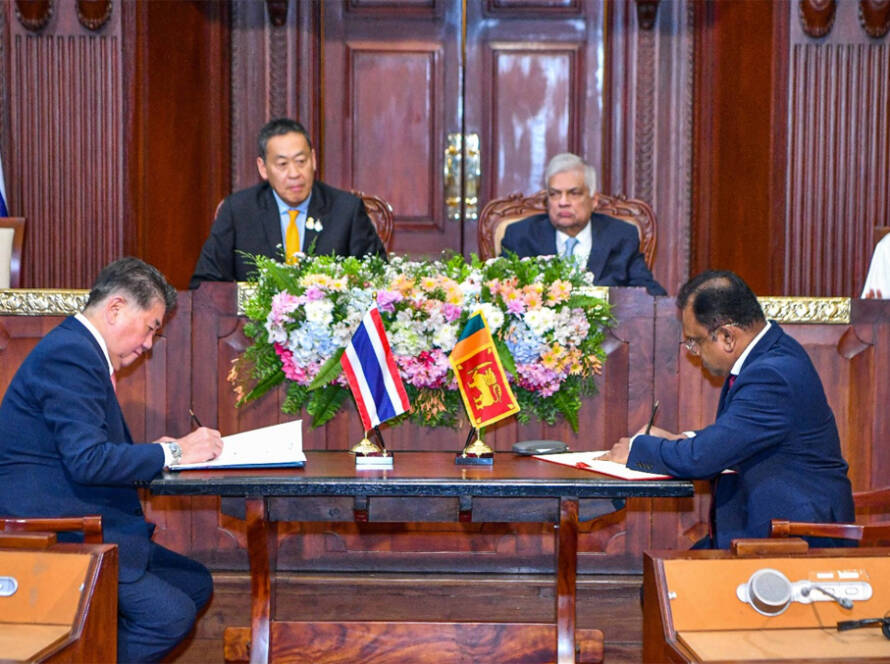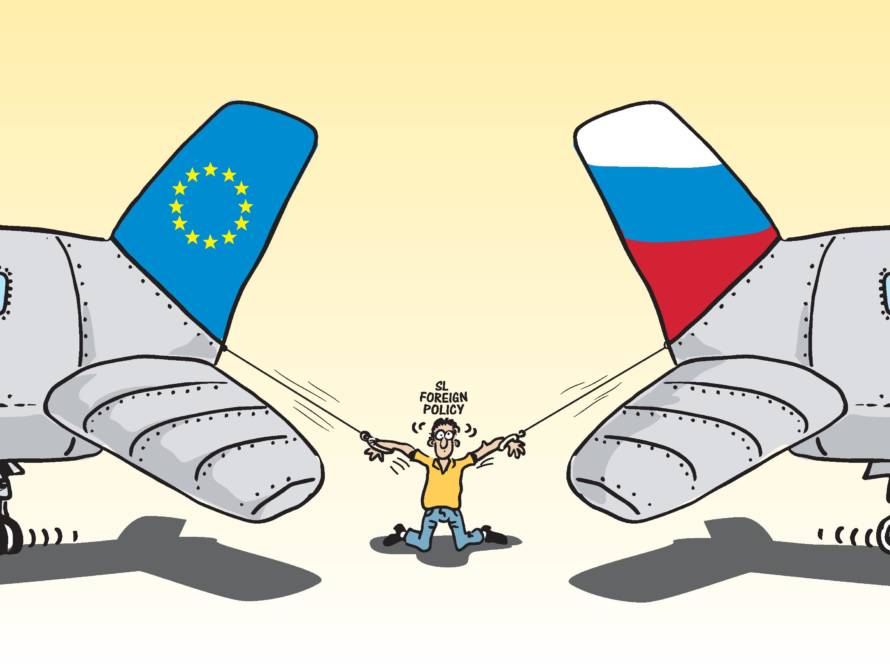By Natasha Gooneratne
Imagine this:
A developing country is in the midst of its most complicated economic crisis. Unemployment levels are rising, but not as precipitously as Inflation. Foreign currency coffers in national banks are as good as empty. As are fuel and gas reserves. International financial agencies have come knocking, they’re not happy about a) the financial instability or b) the default on payments c) the political unrest a and b are giving way to. In private spaces, discussions center around the failure of successive governments and rising consumer prices. In political spaces- that of national corruption, negligence and the need for radical change.
If you are from the Global South, despite the parallels, it is not your country that the description solely alludes to, but more than 105 developing countries worldwide, comprising over one and a half billion people.
Discussing the internationalization of local problems is hardly commonplace for the “developing world.” Most of us would much rather see the local politician we despise rather than the international entity he is negotiating with, as the root of national fiscal woes. But when 105 countries are mimicking one another’s economic predicaments, it affords the necessity to know better.
In 2022, the UNDP, addressing in a report the cost of living in developing countries, noted that the pandemic might have pushed debt in developing countries to a
“50-year high, equivalent to more than 250 percent of government revenues.”
That same year, UNDP Administrator, Achim Steiner, outlining the report to the international community, explained the circular symptoms affecting developing countries who are most hard hit by the multi-thronged global economic crisis- low foreign reserves accentuated by Covid induced lockdowns and global supply chain slumps, fuel and energy shortages exacerbated by the Russia-Ukraine conflict, food and essential shortages, and resulting social unrest and revolt, which act as negative indicators for international funding, bailouts and loans.
In short, the Global South was caught in a reoccurring cycle of dependence, which the international system has seemed poised to exacerbate over the years. Steiner noted that what was happening at that moment in time in Sri Lanka with its foreign debt was expected to occur across other Global South states, the island being the first domino to fall:
“…Developing nations are facing an extremely risky period right now both from a financial and fiscal sustainability point of view, but also from a political one… because we know that when countries default, as has happened with Sri Lanka, (when) access to basic supplies of everyday consumption… cease to be and people go hungry, you very quickly can enter into a political crisis…”
The discourse that followed would ascertain that these countries would be unable to navigate their way through this cycle, on their own. That it would require international multilateral investment banks and agencies including the IMF, to alter their normal working methodologies and implement Debt Service Suspension Initiatives (DSSI).
Analysts elsewhere would reiterate that debt forgiveness should be a serious point of discussion if global equity is something we ever want to achieve. But as has been the case since the decolonization movement, the discussion on debt forgiveness has largely fallen on deaf ears. UNDP’s prediction would ring true even up to right here and now; Bolivia being the latest in the line of interdependent dominos to fall.
Within the centrality of this Global Economic Crisis, and the repayment – or inability thereof -to maintain international loans, another connected point of discussion was on the pressing need of the global economy to move away from the US dollar as its focal trading currency; Moreso within the context of local currency devaluations that had carpet bombed most of the Global South, but also in the face of recalling how easily US imposed sanctions can reverberate across countries caught in the crossfire of the geopolitics.
Perhaps it was these factors that prompted Brazilian President Lula da Silva during a BRICS summit in Johannesburg last year, to call on BRICS member states to create a common currency for trade and investment between each other, reducing dependency on the US dollar. But experts noted that trade among the member states was minimal or nonexistent in some cases.
If trade commonalities and a monetary nexus was what was being searched for, China it seemed would be it. It remains the world’s largest exporter of goods with an export value in 2023 of around USD 3.4 trillion. Not to mention its positioning as an international trader, lender, investor and BRICS member state.
But this idea isn’t simply theoretical, countries including Brazil and Argentina have already implemented a switch from dollar to yuan, as has Bolivia as a way out of its economic collapse. Reports note that the country is in a process of de-dollarization, with the use of yuan for around 10% of its trade.
The expansion of BRICS this year, with new members Saudi Arabia, Egypt, Ethiopia, Iran, and the UAE, means that the larger group homes around 45% of the world’s populace, and produces about 44% of the world’s crude oil. Its membership, new and old, understand the sting that unilateral sanctions cause, placing more emphasis on the need for economic sovereignty, namely de-dollarization.
Moreover, the reform of international financial institutions, such as the IMF and World Bank, were part of BRICS countries’ primary aims when the intergovernmental group was formed in 2009. Perhaps the emergence of the Chinese renminbi as the non-dollar currency of choice in the Global South, may task Bretton Wood bodies with consideration of an alternative methodology of external debt payments that have been dominated thus far by the dollar. Or at least involve debtor state considerations for reform.
This discourse is not, however, without clear hurdles. The dollar is so firmly established as the currency of cross-trade transactions that nudging its general position will take time even in economies like China and India. For instance, a study in 2023 noted that,
“… 86 percent of India’s exports were dollar-denominated, even though only 15 percent of Indian exports went to the United States. 47% of China’s cross-border payments (and likely a much higher percentage of cross-border goods and services trade payments) were in dollars in 2023, even though 2021 data showed that only 17 percent of its exports were bound for the United States…”
But the move, however slow may also signal the United States to seriously take note of growing frustrations in the Global South, including with countries it enjoy strong ties and what Washington calls “shared values” with. An opportunity to consider partnership and strengthened relations over hegemony and control.
While the BRICS states may still be some ways off in the creation of its own currency, the group most definitely has more bargaining power to engage stakeholders in Washington today, than when it was first formed.
What may be required now is that they (BRICS) overcome existing differences between member states, including views on how to best engage with the West, and form a collective intergovernmental working group that documents possible implementable criteria to make de-dollarization sustainable and executable. Perhaps the assistance or expertise of bodies such as UNDP and UNCTAD would strengthen such a process.
Additionally, discussion and promotion of viable features of such a move, and incumbent reform process, must be initiated among like-minded experts of both the Global South and North, at a public forum level.
If another Global Economic Crisis is to be averted, and the economic-collapse-symptoms that over 105 Global South states endured (and to a certain extent are still enduring) is to be avoided in the future, this process, and its path to global equity, must be understood and advocated for in the North, as much as it is in the South.
Natasha Gooneratne holds a Double Masters’ in International Law and Human Rights from the United Nations-mandated University for Peace in Costa Rica, and in Political Science with a major in Global Governance from Ateneo de Manila University in the Philippines. She has worked as a specialist in public diplomacy for Sri Lanka and US governments and has been responsible for creating initiatives toward building South-South cooperation between Global South entities. She is the Founder and convener of Perspective South, an international platform for public accessibility to geopolitics, international law terminology, and perspectives of the Global South.
Factum is an Asia-Pacific focused think tank on International Relations, Tech Cooperation, Strategic Communications, and Climate Outreach accessible via www.factum.lk.
The views expressed here are the author’s own and do not necessarily reflect the organization’s.


